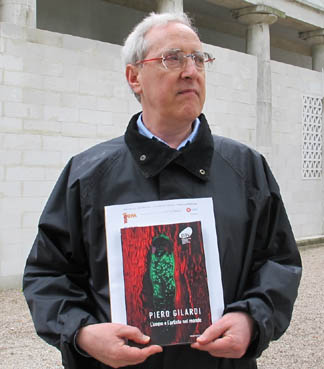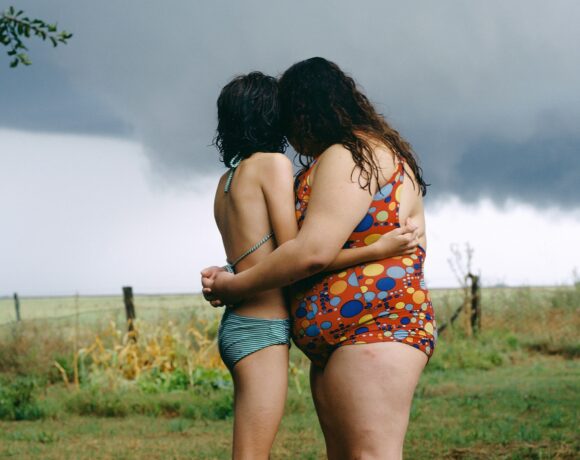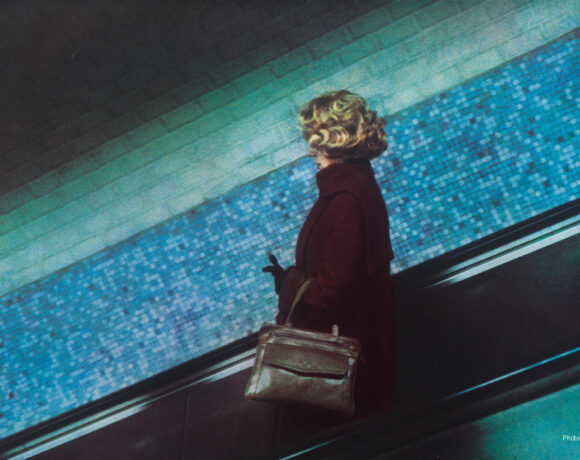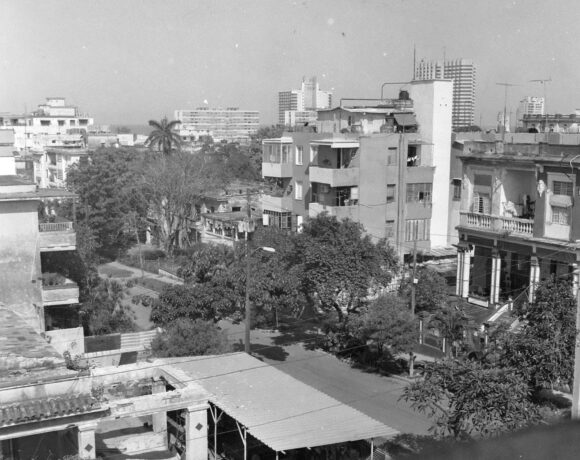The photographic technique has been a tool of investigation (and recording) of reality which, starting from the first clumsy attempts at the beginning of the nineteenth century, has gradually evolved into a process that has managed to cancel first the use of the glass plate and then the use of celluloid film on which to record the image that would subsequently have to be printed. The leap from analogue to digital was an epochal transition which, subsequently, thanks to the mass use of the mobile phone, allowed the introduction of millions of images into a virtual circuit that connects, dialogues and exchanges information between people from the four corners of the world. These images are not always meaningful; often it is a kind of memory album that is opened and made public or a daily diary that is, for narcissism and exhibitionism, shared even with people never directly known. Many times they are images of dishes enjoyed in a restaurant or views of ponds or flowers or clouds or pets, and sometimes we also find ourselves faced with more significant images, such as street protests or vernissages or public events of various kinds. This premise to say that photography, born as an attempt to fix rectangles of reality (landscapes, still lifes, monuments, people, faces, and so on) has then shifted its center of gravity towards other aspects of creativity, coming to bend the medium (the tool and the printing of the image) for purposes that by now have very little of documentary.
Here, then, is “Art of Illusion”, at the Nelson-Atkins Museum of Art, dwelling precisely on this dichotomy and on the crucial question: does photography always give us an incontrovertible truth? The first answer that comes to mind, even for reportage photography or street photography, is that each image is “true” only when it is completed by a caption, in the sense that its expressive power is intrinsic to the contents recorded on the printed paper, but the complete meaning (the place and date, first of all) are information that can only be completed with writing. Obviously, the exhibition does not set itself in this perspective and looks at other experiences and, focusing on the slogan “seeing is believing”, thinks rather of the manipulations that can be carried out in the darkroom or with digital means, including a sequence of works by highly significant authors, starting from the seventies.
This interesting exhibition project falls under the aegis not only of the great experimentation from the early twentieth century, think of Man Ray and Moholy-Nagy, but also of those abstract researches, more or less famous carried out by authors such as Jaroslav Rössler, Lotte Jacobi and Luigi Veronesi. Finally, we recall the debt that the title of this exhibition owes to Sir Ernst Gombrich and to his praiseworthy essay: “Art and illusion. Study on the psychology of representation ”(Phaidon, 1960). In that fundamental text it is stated that the artist does not copy reality, rather he interprets it, even when he wants to reproduce it as faithfully as possible. Ultimately, to argue with other words, painting is an illusion because each painting describes the illusion of reality. And if it is said that painting is an illusory description of reality, the same can be said of photography.
The Nelson-Atkins Museum exhibit includes twenty-five photographers; some very famous, others less, but all united by this common thread of experimental creativity that makes the image always very particular and never repressed by a purely descriptive will. The exhibition, organized by the Nelson-Atkins Museum of Art in Kansas City, is supported by the Hall Family Foundation. These are the authors called to participate in the project: Thomas Barrow, Zeke Berman, Michael Bishop, Cortis & Sgeregger, Robert Cumming, Thomas Demand, John Divola, Liat Elbling, David Hockney, Graham Howe, Kenneth Josephson, Lilly McElroy, Jerry McMillan, Duane Michels, Arno Minkkinen, Abelardo Morell, Grant Mudford, Vik Muniz, John Pfahl, Marcia Resnick, Hiroshi Sugimoto, Michel Szulc-Krzyzanowski, Lew Thomas, Ruth Thorne-Thomsen and Rodrigo Valenzuela.
We now focus on the salient aspects of five authors because they allow us to further study this way of producing artefacts or images not aimed at a descriptive purpose.
Let’s start with Thomas Barrow (Kansas City, 1938), an authentic representative of the counterculture of the 1960s and who experimented with various extra-documentary expressive possibilities. The most famous series is the one called “Cancellations” (1974-1978): these are b / w photographs of landscapes or banal buildings in the American Southwest, whose negative was muted before printing, thus giving the printed image a triple meaning, that of negation / destruction of the subject represented therein, of authorization to press and of expressive value of a sign and gestural type added to the photographed subject. In this regard, William Klein’s thought is worth: “The right filter, the right film, the right exposure are not interesting topics”, a thought that ended with the Painted Contacts, that is, with b / w images highlighted by streaks of red and yellow color. However, I also think of a possible connection with Gordon Matta-Clark, who in his destruction of architectural buildings has elevated the poetics of disaster to the substratum of contemporaneity.
The second name we take as a reference is that of Robert Cumming (Worcester, 1943), who belongs to the conceptual current of the Sixties: defining him a photographer is an understatement, since he also defines himself as a painter and sculptor (but also W. Klein started out as a painter and pupil of Fernand Léger and became also a filmmaker). His work is a clear example of how photography has become no more a process of producing images for use by the media, but a means to bend to one’s own thoughts. With Cumming, domestic disorder becomes a pretext for creative production and I would say that in this sense it also anticipated the work of Fischli & Weiss.
Let’s move on to Thomas Demand (Munich, 1964), because it is symptomatic of an artificial production, that implies complex and very elaborate environmental constructions (like three-dimensional models in 1: 1 scale) which then conclude their journey on large photographic prints. . Many of these models are linked to relevant facts from our recent history, such as the archives of Leni Riefenstahl or Saddam Hussein’s refuge in Tikrit. How to say a scenographic set in cardboard and wood that acts as a subject for the subsequent photographic production; Hollywood to the nth degree; artificial fiction as a process of fantasy.
We then move on to Duane Michals (McKeesport, 1932), an author who has entered the myth of creativity, since in the course of his fruitful production he has adopted various forms of manipulation of photographic language, such as the narrative sequence, multiple exposures and superimpositions, manual pictorial and graphic interventions. All this to reach the boundaries of Narrative Art, introspection and psychological intimacy: the quotation, as an example, of the work “Magritte” of 1965, where we find the trace of all these stylistic characteristics, is valid for all of them. .
Finally, we come to Rodrigo Valenzuela (Santiago del Chile, 1982) who sets up some kind of environmental fictions (a bit along the lines of Schwitters’ Merzbau or Nevelson’s sculptures) and who has declined in a dozen photographic cycles: all respond to the aggregative idea of accumulation: from “Afterwork” to “Stature”, from “American-type” to “General Song”, from “Animitas” to “Trophy Room”.
With this schematic analysis, focusing on the work of five authors, we can conclude that, during the twentieth century, the road to modernity was once again practiced, thus unblocking the impasse generated by Cézanne, who defined himself as “the primitive of a ‘new art”. Finally, it seems fair to point out that in the course of this exhibition, the future seems to look again with optimism at the lymph that gives life to the work, according to an Enlightenment root that allows the generation of a new plant.
Roberto Vidali
Info:
AA.VV. Art of Illusion. Photography and Perceptual Play
22.10.2021 – 25.4.2022
The Nelson-Atkins Museum of Art
4525 Oak Street
Kansas City, MO 64111
816-751-1278
ask@nelson-atkins.org
 Kenneth Josephson, Wyoming, 1971. Gelatin silver print (printed ca. 1980), 12 x 7 15/16 inches. Gift of Hallmark Cards, Inc., 2005.27.1497, courtesy of The Nelson-Atkins Museum of Art
Kenneth Josephson, Wyoming, 1971. Gelatin silver print (printed ca. 1980), 12 x 7 15/16 inches. Gift of Hallmark Cards, Inc., 2005.27.1497, courtesy of The Nelson-Atkins Museum of Art
 John Divola, from GAFB (George Air Force Base) “Dead Mirrors, A” 2015, stampa fotografica, 101, 6 x 114,3 cm, courtesy of the artist
John Divola, from GAFB (George Air Force Base) “Dead Mirrors, A” 2015, stampa fotografica, 101, 6 x 114,3 cm, courtesy of the artist
 Thomas F. Barrow, Tank, 1975. Gelatin silver print, 9 3/16 × 13 9/16 inches (23.34 × 34.45 cm). Gift of the Hall Family Foundation, 2017.44.1, courtesy of The Nelson-Atkins Museum of Art
Thomas F. Barrow, Tank, 1975. Gelatin silver print, 9 3/16 × 13 9/16 inches (23.34 × 34.45 cm). Gift of the Hall Family Foundation, 2017.44.1, courtesy of The Nelson-Atkins Museum of Art
 Rodrigo Valenzuela, Afterwok #2, 2021, silver gelatin print, 30 x 42 cm, courtesy of the artist
Rodrigo Valenzuela, Afterwok #2, 2021, silver gelatin print, 30 x 42 cm, courtesy of the artist
 Thomas Demand, Daily #25, 2015. Dye transfer print, 22 1/8 x 16 ½ inches. Gift of the Hall Family Foundation, 2017.61.8, courtesy of The Nelson-Atkins Museum of Art
Thomas Demand, Daily #25, 2015. Dye transfer print, 22 1/8 x 16 ½ inches. Gift of the Hall Family Foundation, 2017.61.8, courtesy of The Nelson-Atkins Museum of Art

He is editorial director of Juliet art magazine.






NO COMMENT